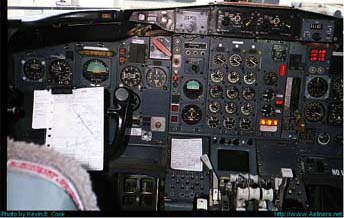|
|
 |
 |
 |
|
 |
Overview
The design of technology interfaces is a familiar area of human
factors for most people. Interface design could include the design
of a graphical user interface (GUI) for software, computers, and
even cockpit displays and instrumentation. Here we will focus on
display interface design for cockpits.
In an airplane cockpit, pilots conduct various tasks concurrently
such as reading displays, conversing with ground control, scanning
the horizon for other aircraft, operating controls, and steering
the aircraft. With so many things competing for a pilot's attention,
it's easy to understand why good interface design is critical.
Instruments and displays that are easy to read and operate contribute
to the safe operation of the aircraft. As you will learn in the
sections below, as display technology continues to improve, better
displays become possible.
|
| Interface Display Design
Let's briefly review the recent evolution of cockpit interface
display design. Listed below are previous design challenges, followed
by current solutions.
Analog Displays and Instrumentation

Key Points:
- Early cockpit instrumentation and displays consisted primarily
of analog dials and gauges.
- Note the number of instruments and their cluttered arrangement.
- Text sizes were fairly small and often difficult to read.
- There was very little if any use of color and graphics.
- Each instrument could only provide one level of information.
Digital Displays and Instrumentation

Key Points:
- Current cockpit instrumentation and displays are often digital
LCD panels that can accommodate 3-D graphics.
- Gauges may display either graphic or numerical read out.
- Displays are capable of presenting several layers of information.
As a result, fewer displays are needed and clutter is reduced.
- Text sizes can be enlarged, increasing readability.
- Color coding is now possible and may be used to distinguish
flight plans from traffic information.
- Increasing automation of these displays may also greatly
improve the pilot's efficiency and accuracy, while relieving
the pilot of additional tasks.
See next generation automated display design in the Reseach Example. |
Research Example |
|
|
 |
|




